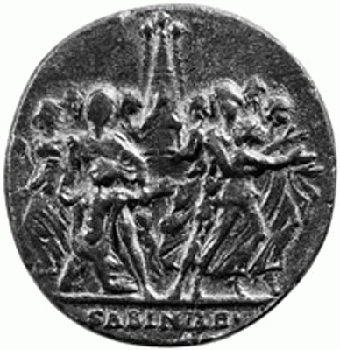American Journal of Archaeology | The Journal of the Archaeological Institute of America
You are here
The Abduction of the Sabine Women in Context: The Iconography on Late Antique Contorniate Medallions
January 2008 (112.1)
The Abduction of the Sabine Women in Context: The Iconography on Late Antique Contorniate Medallions
In this article, I consider the abduction of the Sabine women as pictured on Late Antique contorniates, which are special souvenir medallions that were given at games and entertainments in the circus. The subject, which appeared at that time exclusively on the contorniates, is set in the Circus Maximus next to the primae metae, the southeastern turning posts; it is a setting that implicates a theatrical reenactment of the narrative. This interpretation is supported by contemporary literary sources, which reveal that the plays, while popular in the second half of the fourth century C.E., were reviled by the Christian church and consequently were dropped from the repertoire of spectacula. As such, they do not appear on the second series of contorniates produced at the beginning of the fifth century C.E. Examination of the pictorial derivation of the Sabine contorniate types reveals changes in attitudes toward the Sabine tradition that evolved in the wake of the ascendancy of the church and the Christianization of the pagan aristocracy of Rome in the last decades of the fourth century. But the plays were frequently performed in the Circus Maximus until the interface of the fourth and fifth centuries C.E., and the changing sociopolitical patterns of Late Antique Rome contributed to their sustained popularity and the alarm of the church. Ironically, the pictorial survival in Roman art of the abduction of the Sabine women is due to nothing more than its popular and vulgarized performance as a play in late antiquity.
The Abduction of the Sabine Women in Context: The Iconography on Late Antique Contorniate Medallions
By Antonia Holden
American Journal of Archaeology Vol. 112, No. 1 (January 2008), pp. 121–142
DOI: 10.3764/aja.112.1.121
© 2008 Archaeological Institute of America


